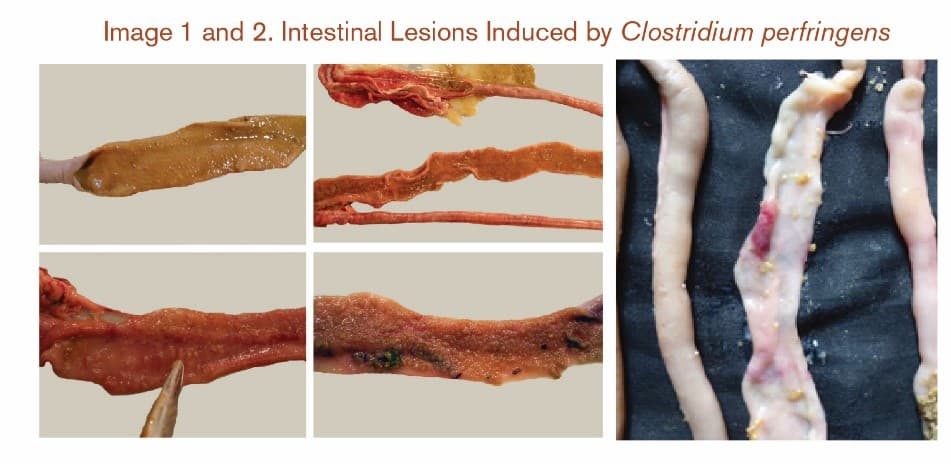Section 1 | An Overview of Necrotic Enteritis
Industry
Page 08 /
Diagnosis
Post Mortem
Given the non-specific signs of necrotic enteritis (NE), it is important to involve your veterinarian when you are experiencing abnormally high levels of sickness and death. Often times, the gross lesions on post mortem examination (abnormalities your vet can easily see with their eyes) are telling of NE. Your veterinarian may also elect to submit tissues for additional testing if necessary. These tests can help to determine what antimicrobial medications are appropriate.
Recognizing and investigating even a slight increase in bird deaths allows for earlier intervention. This will prevent catastrophic losses. Identification of disease-causing pathogens also allows for a more targeted approach when using antimicrobial medications, which will hopefully in turn, lead to better outcomes.
Subclinical NE
Subclinical NE is a production-limiting disease that can be difficult to diagnose. Sacrificing a few poor-doing birds or submitting fresh manure from a sample of birds for laboratory analysis will aid in diagnosing the issue.
Protracted NE
It is always a good idea to have your veterinarian investigate if your birds seem a little off. If you have a number of birds that seem depressed, have reduced feed intake, poor weight gain, ruffled feathers, or diarrhea, it could be an indication of protracted NE.
Acute NE
If you are experiencing a sudden increase in bird mortality, call your veterinarian. In the acute presentation of NE, birds die suddenly without showing signs of illness. A post mortem could help identify NE in your flock. You can then put a plan in place to manage and prevent the disease.

Source: Novus International